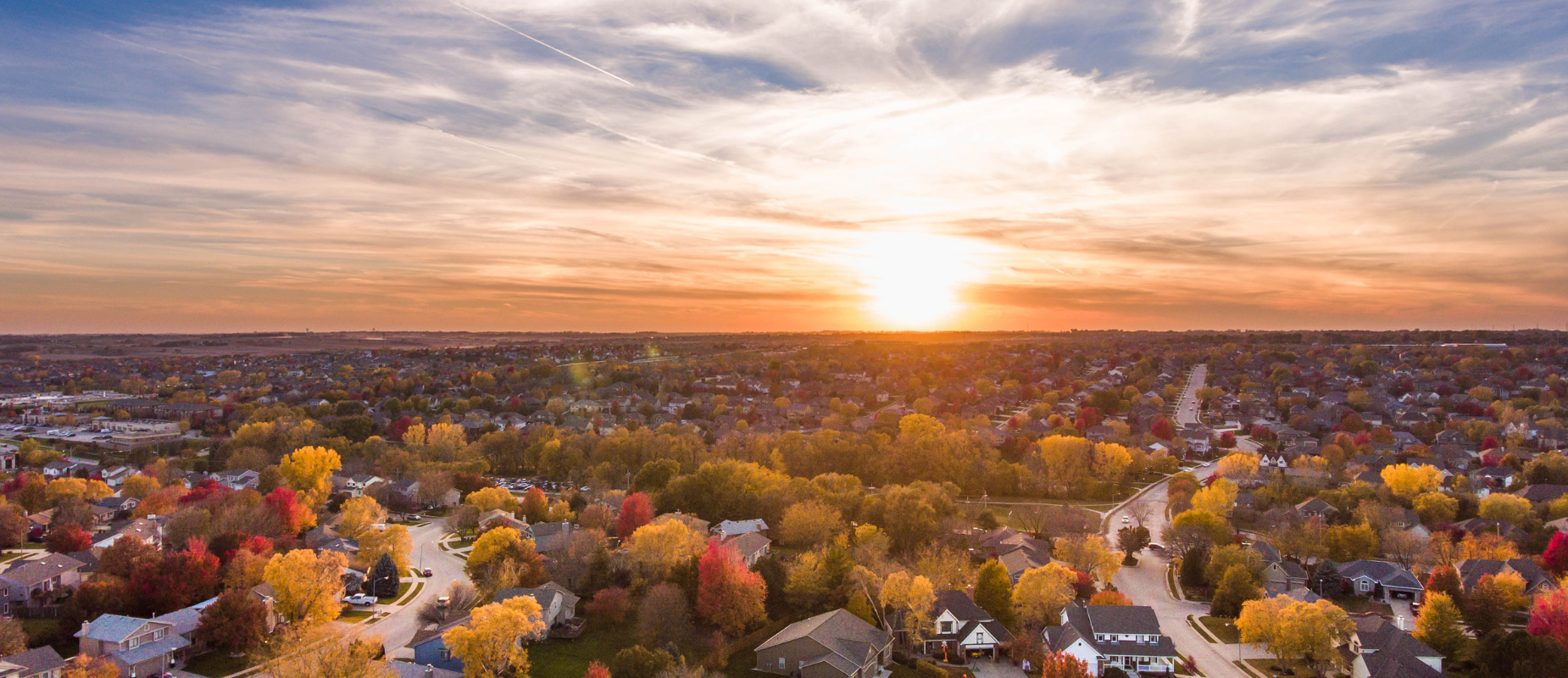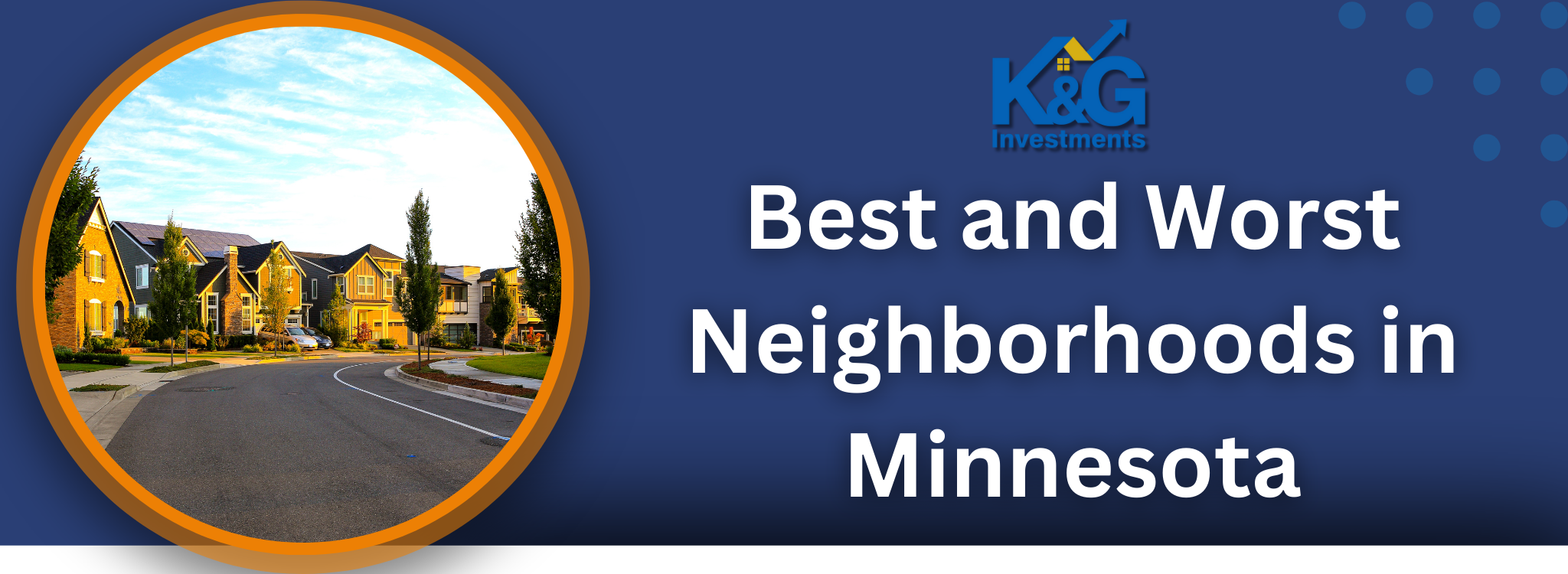
Factors Influencing Neighborhood Safety in Minnesota
How Are Crime Rates Calculated?
Information from local, state, and federal law enforcement agencies calculates Minnesota crime rates. The figures display the number of violent and property offenses reported. Comparing different locations is simple because these rates are typically expressed as the number of crimes per 1,000 residents. To comprehend these rates fully, you must also consider each area’s population density and size.
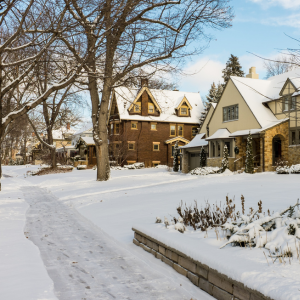
What Role Does Law Enforcement Play in Neighborhood Safety?
Law enforcement is key to keeping neighborhoods safe. In Minnesota, police departments work on crime prevention, maintain public order, and handle emergencies. They patrol communities, investigate crimes, and run public safety programs to lower crime rates. Local police often collaborate with community groups to make crime prevention more effective.
How Do Community Programs Impact Crime Levels?
In Minnesota, community programs are critical in reducing crime and enhancing local safety. They foster interpersonal relationships, promote community involvement, and fortify social ties. Programs that address socioeconomic concerns and encourage shared responsibility for community safety, such as neighborhood watch and youth outreach, can reduce crime.
Socioeconomic Impact on Neighborhoods
How Does Poverty Affect Crime in Minnesota?
Crime rates in Minnesota neighborhoods are strongly influenced by poverty. Higher poverty areas often see greater crime due to inadequate community resources, low access to education, and inadequate housing. Using social policy and economic development, poverty can be addressed, therefore reducing crime and rendering neighborhoods safer.
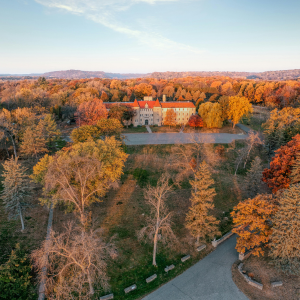
What Are the Economic Disparities Across Different Areas?
Economic disparities across Minnesota’s neighborhoods show differences in income, services, and quality of life. These gaps can impact safety, as places with less money may face more crime and fewer public services. Efforts to improve economic chances and share resources fairly are needed to reduce these disparities.
How Do Employment Opportunities Influence Safety?
Good job prospects in Minnesota help increase community safety by enhancing economic stability and well-being. Consistent employment provides a legal means of income generation and helps lower financial stress. Boosting the employment market and generating additional businesses can improve neighborhood safety.
Comparing Urban and Rural Safety: An Analysis
How Do Crime Rates Differ Between Urban and Rural Areas?
Crime rates in Minnesota differ between urban and rural places. Urban areas often have higher crime rates because of the greater number of people and density, which increases the chances of crime. Rural areas might report less crime but face challenges like fewer law enforcement resources and slower response times.

What Are the Unique Challenges Faced by Rural Communities?
Minnesota’s rural areas must contend with limited access to resources, fewer law enforcement personnel, and isolation, among other safety issues. These elements hinder crime prevention and make it difficult for citizens to seek fast assistance in an emergency. Solutions should concentrate on the particular requirements of rural communities.
How Is Public Safety Managed in High-Population Areas?
Handling public safety in Minnesota’s high-population areas involves planning and coordination among law enforcement, city planners, and community groups. Strategies include deploying more police, using technology for surveillance, and involving the community in safety efforts. Effective urban safety management relies on collaboration and adaptability to meet the needs of crowded regions.
K&G Investments is dedicated to providing insights and analysis on neighborhood safety to support informed decisions by residents and policymakers.
Housing Market Trends and Safety Considerations
Are There Safer Options Within the Affordable Housing Sector?
In Minnesota, especially in St. Paul, affordable, safe neighborhoods are essential. Real estate trends and Minnesota local violence affect Twin Cities housing affordability. Minnesota has affordable housing alternatives, but the safest communities offer an excellent quality of life.
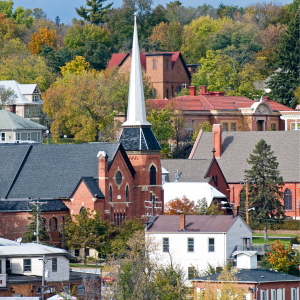
How Do Property Values Correlate With Crime Rates?
Understanding how property values relate to crime rates helps make wise decisions in the Minnesota housing market. Areas with lower crime rates usually have higher property values. Real estate trends show changes in average home prices in Minnesota. You can study these alongside historical crime trends in Minnesota to find good investment opportunities.
What Role Do Real Estate Trends Play in Neighborhood Development?
Real estate trends in Minnesota significantly affect neighborhood development. Urban renewal projects in the Twin Cities, led by local neighborhood associations, can change urban development and lead to gentrification in the Twin Cities. Keeping up with these trends is key to understanding the housing market forecast and predicting changes in neighborhood dynamics.
Public Services and Their Influence on Safety
How Do Education and Schools Affect Neighborhood Appeal?
The caliber of public schools significantly impacts neighborhood appeal in Minneapolis. High school ratings facilitate strong communities, which also increase the appeal of Minneapolis’s family-friendly neighborhoods to the Twin Cities’ diverse communities. Education may increase local desirability and safety, making it a crucial component of neighborhood development.
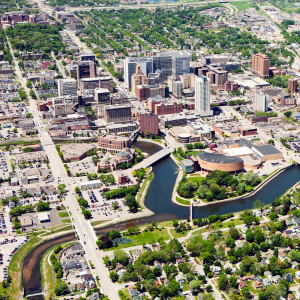
Are There Accessible Health Services in Different Areas?
Access to healthcare in Minnesota is essential for neighborhood safety. Public services in Minnesota neighborhoods, like health services, add to local amenities in Minneapolis neighborhoods. Having accessible health services improves neighborhood safety and supports residents’ well-being.
What Is the Role of Public Transportation in Safe Communities?
Public transportation access in Minneapolis helps create safe communities by making it easy to get around. Commuter towns near Minneapolis benefit from good public transportation, offering accessibility that aids urban development. Knowing the differences between urban and rural areas in Minnesota helps us understand how public transit affects community safety.
Demographic Diversity and Community Safety
What Influence Does Cultural Diversity Have on Neighborhoods?
Cultural variety significantly impacts neighborhoods in the Twin Cities and throughout Minnesota, helping to create inclusive communities. Diverse communities benefit from varied cultural perspectives, creating dynamic ethnic enclaves within Minnesota cities. Residents share traditions and practices, enriching local culture and strengthening community cohesion. By honoring variety, localities can foster inclusion and understanding among various demographic groups.
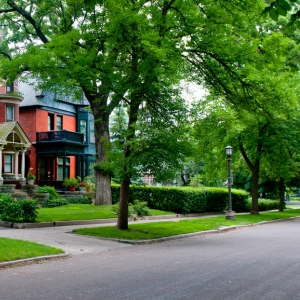
How Do Demographics Contribute to Community Cohesion?
Statistics about people’s backgrounds are vital for keeping Minnesota groups together. Mixing people of different ages, backgrounds, and ways of life makes it easier for them to get along with each other, which is essential for Minnesota suburbia. In areas that value diversity and acceptance, people tend to get along better and help each other more. This welcoming spirit can make the neighborhood a better place for everyone to live by making everyone feel valuable.
Are There Initiatives for Promoting Multiculturalism?
Minnesota has many initiatives to promote multiculturalism. Community programs and cultural exchange activities are essential for fostering understanding among different cultural groups. These initiatives, including diversity programs and inclusive efforts, help build bridges between communities, enhancing mutual respect and cooperation. Such efforts are essential for developing strong, diverse communities that thrive on shared values of inclusivity.
Evaluating Neighborhood Amenities and Lifestyle
What Recreational Facilities Are Available?
Minneapolis neighborhoods offer various recreational facilities for people with different interests. These amenities include parks, sports centers, and leisure activities designed to improve residents’ quality of life. These facilities offer physical activity and social interaction spaces, from playgrounds and athletic fields to community centers and trails.
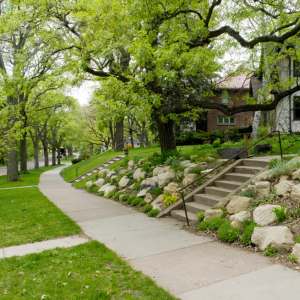
How Do Parks and Open Spaces Contribute to Safety?
Parks and open spaces contribute significantly to community safety and health. Green spaces promote public safety by encouraging community engagement and providing areas for social gatherings. These environments encourage outdoor activities, improving physical and mental well-being. Moreover, well-maintained parks can help deter crime and increase a neighborhood’s overall safety.
Are There Active Community Organizations?
Active community organizations are vital in building civic engagement and promoting local initiatives. In Minnesota, nonprofits and volunteer groups work hard to meet community needs and foster a sense of belonging. These organizations facilitate programs encouraging residents to participate in local decision-making, enhancing community resilience and cohesion.
The Role of Technology in Enhancing Safety
How Are Surveillance Systems Used in Minnesota Neighborhoods?
Minnesota neighborhoods need surveillance cameras for security. Security cameras and monitoring systems reduce crime and promote public safety. These devices provide constant surveillance, helping law enforcement maintain order and community safety.
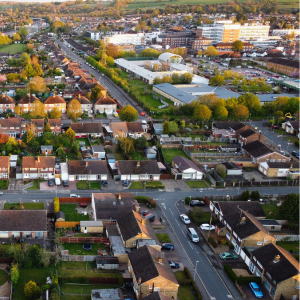
What Innovations Are Being Implemented in Public Safety?
New technologies are improving public safety in Minnesota. Intelligent systems like real-time crime prevention tools and advanced emergency services improve response times and manage crises effectively. These innovations aim to create safer communities by using advanced technology to address safety challenges.
How Effective Are Emergency Response Systems?
Emergency response systems in Minnesota are designed to be highly effective, focusing on quick response times and efficient crisis management. These systems use established safety protocols to provide timely assistance during emergencies. Regular evaluation and improvement of these systems are essential to maintain their effectiveness and reliability in protecting communities.
Environmental Factors and Their Relation to Crime Rates
Understanding how environmental factors influence crime can help create better crime prevention strategies. In Minnesota, weather conditions, infrastructure, urban planning, and environmental hazards affect safety and crime rates.
How Do Weather Conditions Impact Crime?
The weather can significantly influence the crime rates in Minnesota. In milder months, there is an increased incidence of certain crimes, such as assaults and property crimes, as individuals are more likely to be outside. Some criminal activities may be diminished during cold, snowy winters because snow and ice make it more difficult to perpetrate them. Law enforcement can improve its planning and resource utilization by recognizing these patterns.
Are There Regions More Prone to Environmental Hazards?
Some Minnesota communities are particularly vulnerable to environmental risks such as flooding and industrial pollutants. These dangers raise safety issues and may promote crime by producing social unrest or straining community resources. Identifying these places is critical for improving community safety and planning.
How Do Infrastructure and Urban Planning Affect Safety?
Infrastructure and urban planning are crucial for community safety in Minnesota. Good design, such as adequate street lighting and efficient public transport, can lower crime rates. Poor infrastructure might lead to higher crime rates due to unsafe environments. Effective urban planning, considering safety and accessibility, can reduce crime and improve community well-being.
Understanding Crime Prevention Measures
Minnesota uses various crime prevention measures to combat crime. These best practices involve neighborhood watch programs, law enforcement efforts, and community engagement.
What Are the Best Practices in Crime Prevention?
Crime prevention practices in Minnesota focus on community involvement and proactive strategies. Community policing, surveillance technology, and educational programs are key. Residents and authorities can create a safer environment and lower crime occurrences.
How Effective Are Neighborhood Watch Schemes?
Minnesota’s Neighborhood watch schemes effectively boost community safety and crime prevention. They encourage residents to participate actively, increasing vigilance. This involvement helps deter crime and promotes a sense of responsibility among neighbors.
What Strategies Are Employed by Law Enforcement?
Minnesota law enforcement uses data-driven policing and community collaboration to reduce crime. By analyzing crime data, police can allocate resources effectively and target high-risk areas. Programs that foster community trust and cooperation are vital for successful policing.
Exploring Neighborhood Identity and Reputation
Neighborhood identity and reputation in Minnesota significantly impact community dynamics and perceptions. Understanding their development over time provides context for current trends.
How Is Neighborhood Reputation Formed?
In Minnesota, neighborhood reputation is influenced by historical developments, socioeconomic conditions, and demographics. Media portrayals, real estate trends, and community projects also shape public perception. Understanding these factors helps explain how neighborhood identities are formed.
What Are the Historical Contexts Behind Certain Areas?
The history of neighborhoods in Minnesota offers insights into their evolution. Many places have rich histories that contribute to their identities. Learning about past events and changes helps explain how communities have transformed and how these changes affect current perceptions.
How Can Community Engagement Shape Public Perception?
Community engagement is key to shaping how neighborhoods are viewed in Minnesota. Inclusive activities and cultural events can positively impact perceptions by both residents and outsiders. By creating a supportive community atmosphere, perceptions can shift towards a more positive identity.
By examining these factors, K&G Investments aims to provide insights into Minnesota’s community safety and development dynamics.
Long-Term Projections for Neighborhood Safety
What Are the Future Trends Predicted for Minnesota Neighborhoods?
Minnesota neighborhoods are set to change a lot in the coming years. Urban development and population changes are expected to shift the housing market. These shifts will affect community safety by changing how neighborhoods look and function. By understanding these trends, residents can better adapt and improve their safety strategies.
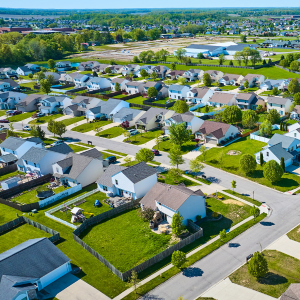
How Will Technological Advancements Influence Future Safety?
New technology will significantly enhance public safety in Minnesota. Tools like advanced surveillance systems and improved emergency response technology can help prevent crime. They make law enforcement more efficient and give communities real-time information for smart safety decisions.
Are There Policy Changes Expected to Affect Public Safety?
Changes in public safety policy in Minnesota may influence law enforcement strategies and crime prevention efforts. New laws may boost community engagement and cooperation between residents and officials. Keeping up with these changes is key since they affect how neighborhoods stay safe.
Connecting Crime Data with Daily Living
How Can Residents Stay Informed About Crime Levels?
Residents can stay informed about local crime levels in several ways. Reliable sources provide crucial safety information, including community resources and neighborhood alerts. Following local news also provides timely updates so residents can react quickly to changes.
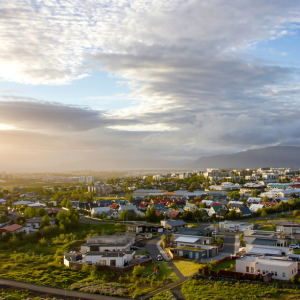
What Tools Are Available for Tracking Neighborhood Safety?
Many tools now exist for tracking neighborhood safety using mobile technology. Neighborhood apps and community safety platforms offer real-time updates, helping residents make informed choices about their daily activities.
How Can Individuals Contribute to a Safer Environment?
Individuals can help improve community safety by participating in local initiatives. Joining neighborhood watch programs, volunteering, and raising public awareness are effective ways to contribute to a safer environment. Community involvement lets residents take charge of their security.
For more detailed insights and resources on enhancing neighborhood safety, explore our platform at K&G Investments.
FAQs:
What are some of the best neighborhoods to live in Minneapolis?
Minneapolis has excellent neighborhoods, like Linden Hills, which feels like a small town and is close to Lake Harriet. North Loop is another vibrant area popular with young professionals because of its nightlife and walkability.
Which neighborhoods in St. Paul are considered the best?
Summit Hill and Macalester-Groveland are top choices in St. Paul. They have historic homes, tree-lined streets, and excellent schools, making them ideal for families.
Where are the most affordable places to live in Minnesota?
Brooklyn Park and Maplewood offer affordable housing with good amenities. These areas are significant for first-time homebuyers.
What are the worst neighborhoods in Minneapolis in terms of safety?
Some parts of North Minneapolis have higher crime rates. However, urban renewal projects often bring improvements, so check the latest statistics.
How safe is downtown Minneapolis?
Downtown Minneapolis has become safer recently due to increased police presence and community efforts. For the latest updates, look at recent crime maps.
Are there pet-friendly neighborhoods in Minnesota?
Yes, areas like Uptown Minneapolis and Como Park in St. Paul are pet-friendly, with many parks and trails. Local businesses also welcome pets.
What are some popular areas for young professionals in the Twin Cities?
North Loop in Minneapolis and Lowertown in St. Paul are popular with young professionals due to their bars, restaurants, and cultural events.
What should I know about housing affordability in the Twin Cities?
Housing prices vary, but suburbs like Bloomington and Brooklyn Park are more affordable. When comparing prices, consider commute costs and local amenities, and check real estate sites for current data.
Key Insights
- Minnesota living offers a variety of choices, from artsy neighborhoods to quiet suburbs. Check out the best neighborhoods in St. Paul and the exciting new areas in the city.
- The Twin Cities boast historic areas and are experiencing changes with urban renewal projects and gentrification. There’s a noticeable difference when comparing north vs south Minneapolis neighborhoods.
- The safest neighborhoods in Minnesota have low crime rates, but there are differences across various counties in Minnesota based on historical crime trends.
- If you’re looking for the best MN neighborhoods to buy a home, consider researching average home prices. Options range from affordable neighborhoods in St. Paul to more luxurious and expensive areas.
- Lakefront living in Minnesota and commuter towns near Minneapolis are excellent choices for those who love scenic views and convenience.
- Walkable neighborhoods in Minneapolis support vibrant nightlife facilitated by local zoning laws that encourage mixed-use spaces.
- The top suburbs of Minneapolis and various rent prices are critical for first-time homebuyer tips in Minnesota, which offer affordable options.
- Urban development in the Twin Cities focuses on preserving cultural aspects while promoting growth, which is highlighted by events in artsy neighborhoods in Minnesota.
- Senior-friendly neighborhoods in St. Paul provide amenities for comfort and ease, catering to older residents.
- Moving to the Twin Cities involves understanding the most dangerous areas in Minnesota for informed decision-making.
This information applies to Minnesota and its cities, including Minneapolis, St. Paul, Minnetonka, Plymouth, and more. For more details, please call us at (612) 400-8070 or visit our website at K&G Investments.
Get An Offer Today, Sell In A Matter Of Days
Additional Resources For Minnesota Sellers

